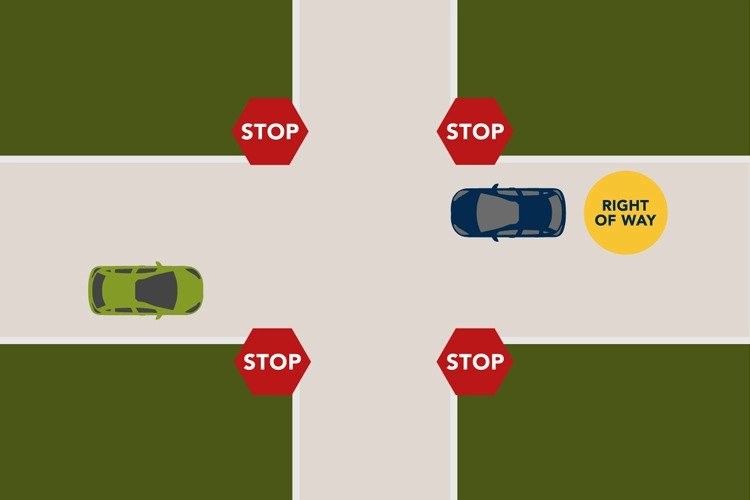Most of us completed driver’s ed years ago, but it’s surprising how many drivers have persistent questions about who has the right of way at four-way intersections, when entering the highway from an off-ramp, or when there is a flashing yellow light at an intersection. Not only does the right of way and failure to yield cause confusion, but this lack of understanding can also cause serious accidents on the roadway that lead to severe injuries.
What Is the Meaning of Yielding the Right of Way?
“Yielding the right of way” basically means letting others in the roadway go before you go. How do you know when this is appropriate? There are usually indications that you should yield, specifically a yield sign. If you see one of these signs, it means that drivers already in the roadway get to go first.
Rules governing the right of way are determined by state and local authorities. All drivers in Texas must follow the state’s laws regarding rights of way. Some of these pertain to traffic signs, intersection travel, and pedestrians. At any time when a driver is required to stop before proceeding onward, the driver must yield the right of way to a pedestrian. Drivers are also required to stop before they enter a crosswalk if they have a red signal or stop sign.
Dealing With Rights of Way and Intersections
When a driver enters an intersection where more than one driver is required to stop, there are specific rules that may also apply. Drivers must carefully adhere to these rules in order to avoid accidents.
Some rules that all drivers should be aware of include:
- Drivers who stopped first – Whenever there is an intersection that involves multiple vehicle entries, the driver who arrived at the intersection first has the right of way.
- Drivers to your right – Should two or more vehicles approach an intersection simultaneously, the driver to the right has the right of way. All other drivers must yield the right of way.
- Drivers turning left or right – A driver who is making a left- or right-hand turn must always yield to traffic that is traveling straight, as well as to pedestrians.
Understanding who has the right to proceed first is an important step in avoiding accidents when you are uncertain who has to yield and who has the right of way.
Special Circumstances
There are certain circumstances when the typical rules governing rights of way change. Some of these include:
- Emergency vehicles – Drivers who are aware of the presence of an ambulance, police car, or fire truck must always yield the right of way. In many cases, this involves moving out of the line of traffic or pulling over completely to allow the emergency vehicles to safely pass.
- Entering a paved road – Drivers traveling on unpaved roads, driving through alleys, or entering a roadway from a driveway must yield the right of way to the driver who is passing on the paved roadway in front.
- Railway crossings – Trains have the right of way, and all operators must stop when signals indicate that there is a train approaching an intersection.
- Pedestrians – According to Texas law, pedestrians always have the right of way, even if they are crossing a roadway outside of the crosswalk. When a signal changes, drivers must give the pedestrian sufficient time to safely cross to the opposite side of the road.
Intersections often prove dangerous for vehicle operators and pedestrians alike. It is easy to see why traveling without yielding, ignoring the rules that govern rights of way, or a simple lack of knowledge can cause an accident that results in serious injury.
Is Failing to Yield a Crime?
Actions have consequences. When a driver fails to yield, and the outcome is a traffic accident, the at-fault driver is liable for the damages and injuries that result.
Additionally, drivers who fail to yield may also face other consequences, including:
- Steep fines – Drivers may face fines up to $2,000 if they cause an accident because they did not yield the right of way. If the injuries are serious, the at-fault driver could face fines up to $4,000.
- Driving record impact – Drivers could incur points on their driving records if cited for failing to yield. The number of points will vary depending on what other factors, such as impaired or distracted driving, played a role.
- Insurance increases – A driver cited for failure to yield may not have any insurance increase, but if the failure resulted in an accident, chances are high that once the claim is filed, the insurance company will consider that driver high risk and subsequently increase their rates.
It is always important to remember that not every failure to yield or right of way violation results in an auto accident; however, drivers may still receive a citation if they fail to obey the rules of the road.
It is always important to remember that not every failure to yield or right of way violation results in an auto accident; however, drivers may still receive a citation if they fail to obey the rules of the road.


